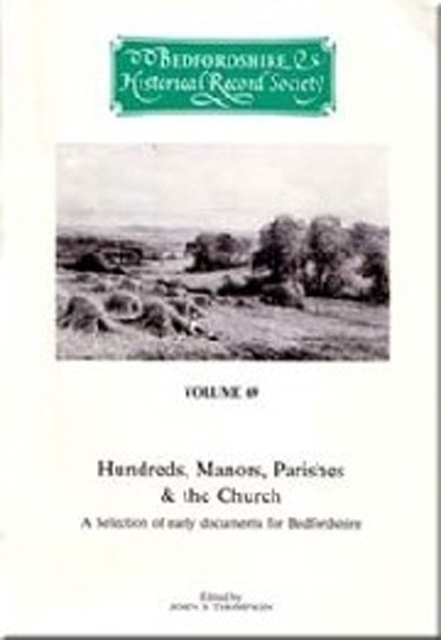Book contents
- Frontmatter
- Contents
- Abbreviations
- Symbols Used In Transcription
- Preface: John Stevenson Thompson
- The Hundred Rolls of 1274 And 1279
- Account Roll For Higham Gobion And Streatley 1379-1382
- Blunham Rectory Accounts 1520-1539
- Turvey Churchwardens' Accounts 1551-1552
- Bedfordshire Archidiaconal Visitations 1578
- Eggington Manor Court Rolls 1297-1572
- Index of personal names
- Index of places
Blunham Rectory Accounts 1520-1539
Published online by Cambridge University Press: 05 August 2023
- Frontmatter
- Contents
- Abbreviations
- Symbols Used In Transcription
- Preface: John Stevenson Thompson
- The Hundred Rolls of 1274 And 1279
- Account Roll For Higham Gobion And Streatley 1379-1382
- Blunham Rectory Accounts 1520-1539
- Turvey Churchwardens' Accounts 1551-1552
- Bedfordshire Archidiaconal Visitations 1578
- Eggington Manor Court Rolls 1297-1572
- Index of personal names
- Index of places
Summary
The study of the economic position of the beneficed clergy in the early sixteenth century is hindered by the scarcity of surviving accounts. Assessments for taxation, such as the Valor Ecclesiasticus of 1535, can tell us a great deal about the comparative values of benefices but they provide little detail about the sources of revenue, the means by which that revenue was collected, or the various items of expenditure which had to be met out of the incumbent’s income. In his survey of medieval clerical accounts, Mr Heath described six documents, ranging in date from 1414 to 1520. The three Blunham accounts printed here, dated 1520, 1534 and 1538-9, bear many similarities to those discussed by Mr Heath and they provide valuable evidence for a study of the finances of a comparatively wealthy benefice during the Reformation period.
They were among the archives of the Grey family of Wrest Park deposited at the Bedfordshire County Record Office by the Rt Hon the Lady Lucas, and have the catalogue numbers L 26/232, L 254 and L 26/1407.
The rectory of Blunham was one of the wealthiest livings in Bedfordshire. At the time of the Taxation of Pope Nicholas IV of 1291, it was one of the ten most valuable benefices in the archdeaconry of Bedford; its assessment of £20 annual value was exceeded only by the rectories of Felmersham and Shillington. The Valor Ecclesiasticus of 1535 assessed Blunham at £46 13s 4d, a valuation exceeded in Bedfordshire only by the rectory of Shillington.
The rector of Blunham during the period covered by these three accounts was Master William Wittur. An Oxford graduate, he had by 1514 attained the degree of Doctor of Canon Law. He was instituted to the rectory of Blunham in March 1514, on the presentation of Henry Grey esquire, and held the living until his death in 1542. It would seem unlikely, however, that Wittur was responsible for the compilation of these three accounts. The 1520 document records the receipt of tithes and offerings by John Cawt, the parochial chaplain or, as he described himself, ‘gubemator animarum’. The account for 1534 was clearly drawn up by the bailiff of Sir Henry Grey of Wrest, the patron of the living, and the same would appear to be true of the 1538-9 account.
- Type
- Chapter
- Information
- Hundreds, Manors, Parishes and the ChurchA Selection of Early Documents for Bedfordshire, pp. 124 - 169Publisher: Boydell & BrewerFirst published in: 2023

